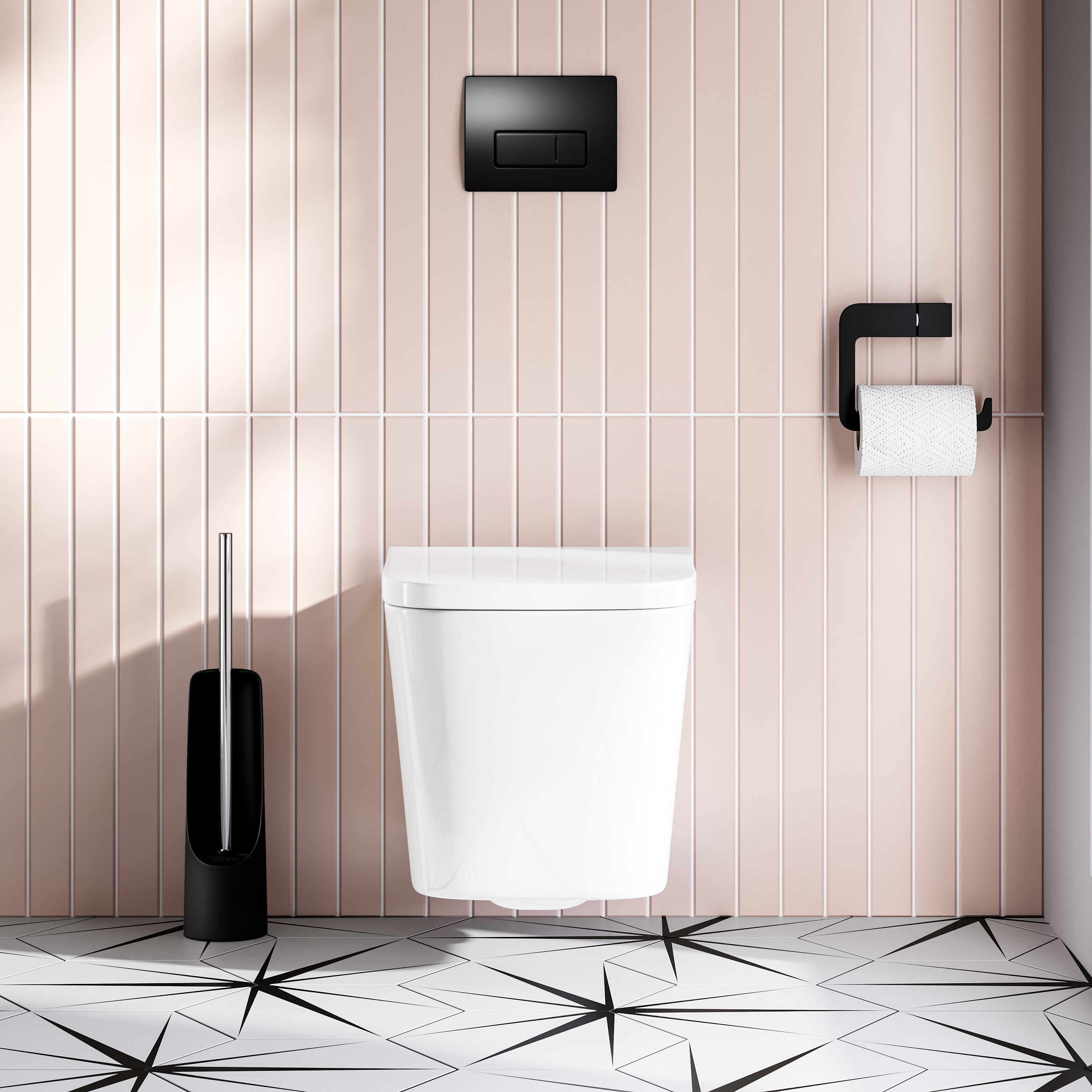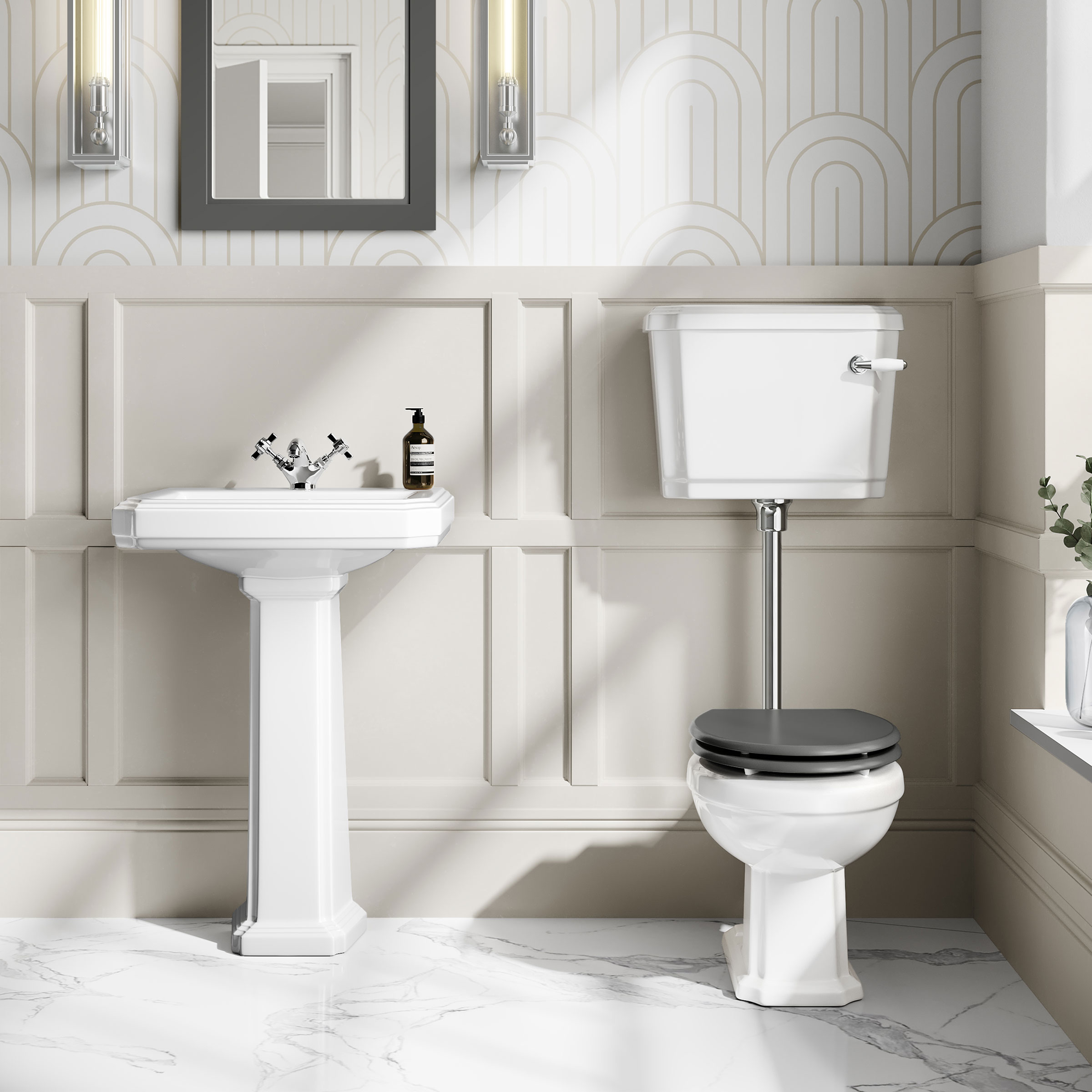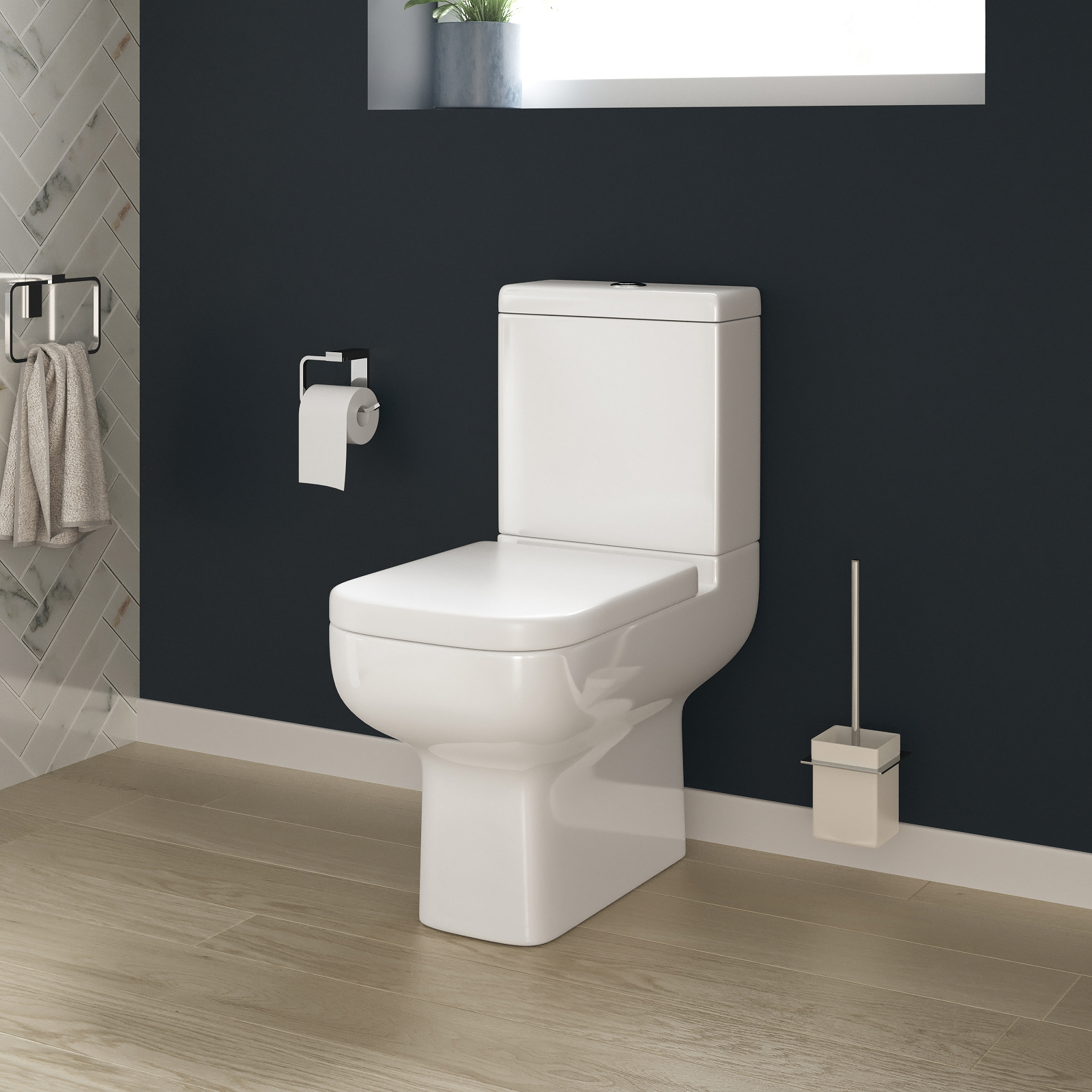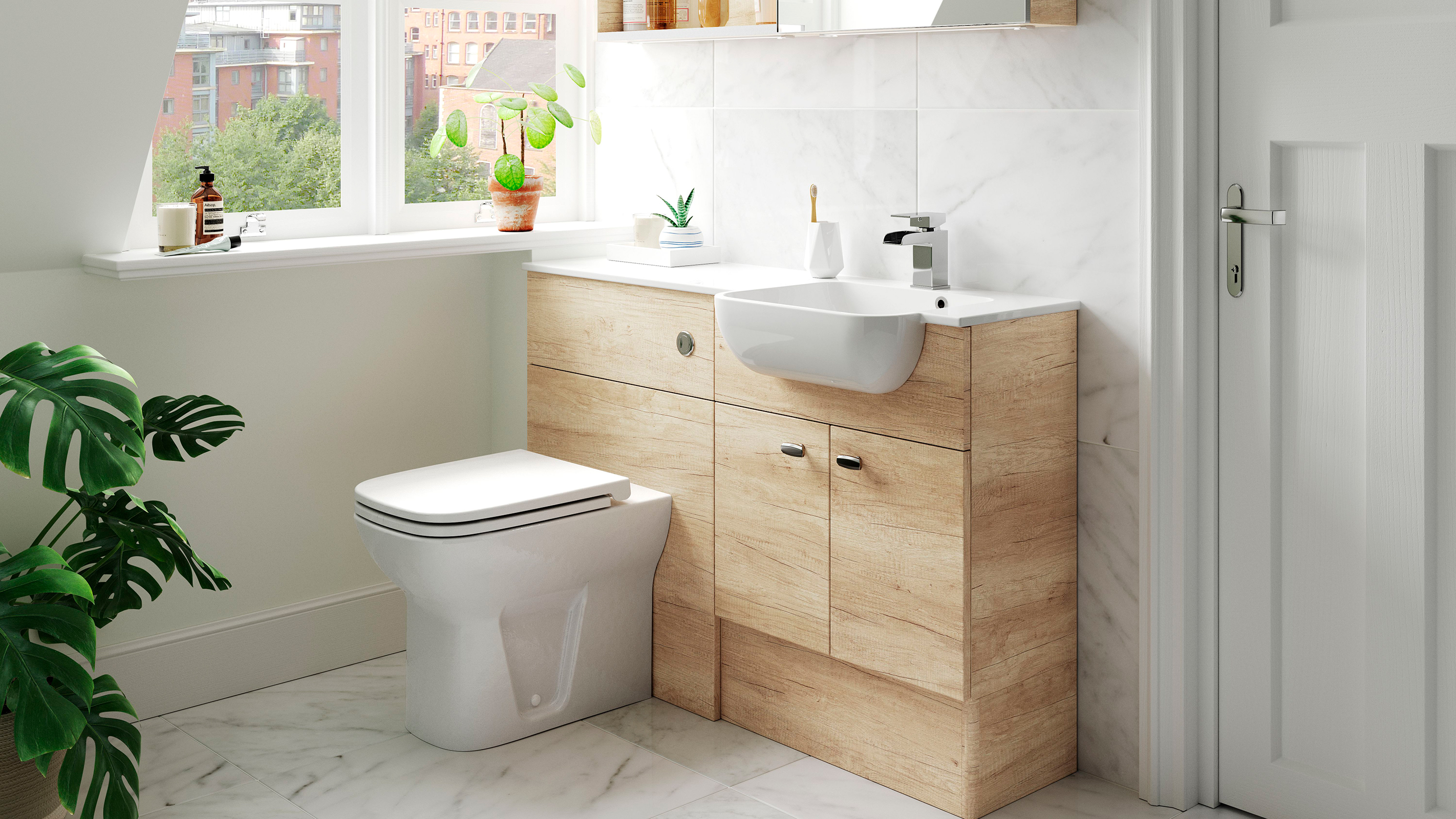Types of toilet: All the options for your new bathroom explained
There are a few different types of toilet and choosing the right one for your bathroom is key not only for function, but for the look you want to create too. We take a look at all your options when selecting which loo is for you

There are a few different types of toilets and choosing the right one for your bathroom is key not only for function, but for the look you want to create too.
So when thinking about your bathroom design, consider where your toilet is first and what style it is – or what type of toilet you want to include to change it up.
Moving the toilet is an expensive undertaking in a bathroom renovation, so it’s often more cost effective to keep it in the same place. But that doesn’t mean you can’t change the type of toilet you have.
“Start by assessing the amount of space you have, since toilets come in different sizes and configurations,” says Emma Mottram, brand marketing manager at Laufen. “If you're limited on space, consider a close-coupled toilet with a slender cistern that sits close to the wall to save precious inches. Alternatively, you can factor in a stud wall and install a frame behind it for a wall-hung WC's workings. This is an excellent option for small bathrooms, as wall-hung WCs float above the floor, creating the illusion of more space.”
Here we take a close look at the three main types of toilet so you can properly assess all the options for your space.
Types of toilet: Three main styles
The three main types of toilet are close-coupled, wall-hung and back to wall. There are varying shapes and styles within each of these and each can work in either a modern or classic bathroom design, just make sure to choose one to suit the look you’re going for.
If you prefer contemporary bathroom design, a simple toilet with sleek lines and minimal detail will keep things looking modern. But toilets with more design detail like ridge patterns and panels will suit a more classic space. Also think about the bowl. Many modern designs now have a rimless bowl, which means the toilet is much easier to clean as there are no nooks for germs to lurk. You can read more on 'what is a rimless toilet?' in our guide.
Each type of toilet has pros and cons and some might require more installation work than others. It’s important to weigh up the advantages, disadvantages and structural requirements before you decide.
1. Close-coupled toilets

What is a close-coupled toilet? This is probably the type of toilet we are most familiar with. The cistern – where the water is fed through from and stored – sits above the toilet bowl forming one unit connected by pipework. A close-coupled toilet will have a flush button or lever on the top part of the cistern and the pan will sit on a pedestal that goes to the floor.
“Close coupled toilets are popular thanks to their straightforward installation and easy access for plumbing repairs. They come in modern and traditional styles, so this type of toilet works in most bathrooms,” says Dave Cruz at Myjobquote.co.uk.
A close-coupled toilet is ideal for a like-for-like replacement making this type of toilet a cost-effective option. The GoodHome Winam Close-coupled Rimless Standard Toilet set with Soft close seat at B&Q costs £143They are available in modern and traditional styles with different shapes. For example, you can have an angular style or one with curved edges.
A drawback of a close-coupled toilet is that they can be more bulky than other types of toilet such as a wall-hung or back to wall design. And since the cistern is on show, you’ll not be able to use that wall space for anything else.

2. Wall-hung toilet
Just like the name suggests, a wall-hung toilet hangs on the wall and is kept in place thanks to a framework system installed behind it. You can buy concealed cistern systems like the Grohe Solido 4-in-1 Wall Hung Set for WC and wall-hung toilet pans separately (ideal if you have your eye on a specific pan look) or whole kits like this wall-hung cistern and pan from B&Q.
If you’re designing a new bathroom from scratch, a stud wall or a cabinet will have to be built to house the frame. This holds the cistern in place behind the wall and provides a surface for a flush plate.
A great way to use the void above the new toilet created by the stud wall is to create a built-in cupboard and keep spare loo rolls and cleaning products hidden away. Or for something more decorative, you could create a niche and keep toiletries on show. If a stud wall isn’t an option, a wall-hung toilet system can also be installed within a unit.
As wall-hung toilets don’t show any pipes or other fittings and keep the floorspace clear, they create the feel of a bright and airy bathroom, and keeping the toilet off the floor makes cleaning easier.
“Unlike other types of toilets, the pan, cistern and frame, and the wall flush are often purchased separately. This does give you more flexibility. But you need to make sure all the parts you buy are compatible,” says Dave Cruz. “In terms of a cistern for a wall-hung toilet, look for those that insulate against condensation, to minimise damp behind your wall or panel. You also need to think about plumbing access in case anything goes wrong."
A wall-hung toilet is a more expensive option due to the installation and framework required but can have a tidy finish to it.

3. Back to wall toilets
"A back to wall toilet can be easier to install as there is no need for supporting brackets, says Jamie Bebbington, director at Aston Matthews. “Both back to wall and wall-hung toilets give a streamlined look in a contemporary bathroom with the cistern concealed in the wall.”
A back to wall toilet sits on the floor, but you can still have the cistern concealed behind the wall, or the cistern can be placed in front of the wall between the wall and the pan.
If the cistern is not installed behind a stud wall or in a unit, bear in mind the toilet will project out further into the room. Use a unit to add colour like the Back to Wall WC Toilet Unit 500mm Wide in Cashmere at B&Q.
The main cons of a back to wall toilet are that there is more ceramic to clean and you’ll lose some floor space, compared to a wall-hung toilet.

Other types of toilet to add to your bathroom
Need a different type of toilet? While close-coupled, wall-hung and back to wall toilets are the three main types of toilet, there are other styles.
You could look for a toilet and basin combined in one unit to save on space and keep plumbing outlets together. This will help create a neat WC and wash zone that’s ideal in smaller bathrooms and cloakrooms.
A corner toilet can overcome space issues if your bathroom is on the smaller side, or if you have awkward angles to play with. This modern corner toilet from Amazon is a good example of this.
Short-projection toilets will also help retain those precious inches if you’re looking to maximise space elsewhere. This simply means that the bowl doesn’t come out as far, but it’s still fully functional. If this is what you are looking for, you can try this short projection close-coupled toilet for tight spaces from Amazon.
And if you’re a tech fan, how about a shower toilet? This latest innovation combines a loo and bidet in one, all controlled by smart technology. You can check out some smart shower toilets for sale on Appliances Direct.
Additional toilet features
Remember to think about how much water each flush will use. These days there are flushes that use just four litres of water. A dual flush has a smaller and larger flush option with differing water usage. You can get flush plates, levers and buttons in different finishes to match your bathroom or add an accent.
Gravity-flush toilets are the most common type of toilet. They use gravity to flush waste and water away so when you operate the flush, a valve will open to allow water in to remove the waste.
Get the Homebuilding & Renovating Newsletter
Bring your dream home to life with expert advice, how to guides and design inspiration. Sign up for our newsletter and get two free tickets to a Homebuilding & Renovating Show near you.

